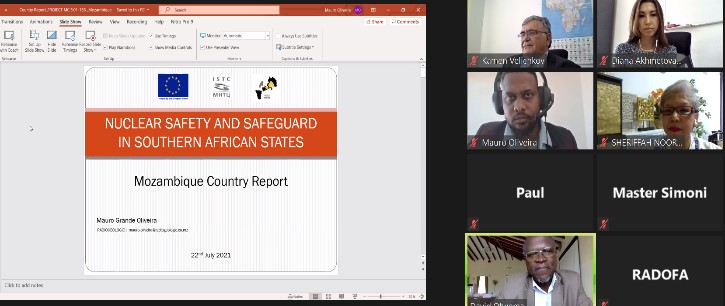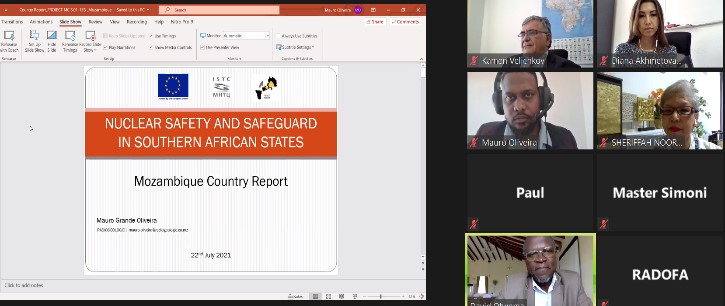Nuclear governance in Mozambique undergoes a peer review at an ISTC Webinar

 On 22nd July 2021, ISTC organized a Webinar themed Stakeholder Engagement For Nuclear Capacity Building, Safety and Security in Africa. The series of the monthly ISTC Webinars offers a venue for exchange of ideas and information over the specific objectives of the EU Project MC 5.01 15B Support to Southern African States in Nuclear Safety and Safeguards, implemented by ISTC.
On 22nd July 2021, ISTC organized a Webinar themed Stakeholder Engagement For Nuclear Capacity Building, Safety and Security in Africa. The series of the monthly ISTC Webinars offers a venue for exchange of ideas and information over the specific objectives of the EU Project MC 5.01 15B Support to Southern African States in Nuclear Safety and Safeguards, implemented by ISTC.
Ms Sheriffah Noor Khamseah Al-Idid, Innovation and Nuclear Advocate and Project Consultant presented on Enhancing Nuclear Safety and Security-Transportation of UOC and RAM through Innovation. Discussions included challenges in transportation of radioactive materials and present gaps in legislations and enforcement as well as initiatives undertaken to narrow these gaps.
A Country specific report on Mozambique focused on nuclear sector governance in the country was presented by Mauro Grande Oliveira, CEO, Radiogeologic Limitada. This was then followed by the remarks of the discussant, Dr Timur Zhantikin, Director, Nuclear Power Plant, Kazakhstan, who provided methodological guidance for the elaboration of the report.
Currently uranium is not mined in Mozambique. In 1960s one mine functioned in the northern province Tete, and its two shafts continue to cause lingering contamination. Today Mozambique uses sealed radioactive sources in medical practices; industrial radiography and well logging; container and security scanners.
In Mozambique, the National Atomic Energy Agency (ANEA), created in 2009, leads the efforts towards full national compliance with international standards. The legal and normative framework is based on the Atomic Energy Law, and several regulations adopted in 2017 and 2018.
.jpg) Mozambique received technical assistance related to personal dosimetry, environmental monitoring and calibration of equipment. However, external support in capacity building implies improved accreditation process of foreign qualifications that has yet to happen.
Mozambique received technical assistance related to personal dosimetry, environmental monitoring and calibration of equipment. However, external support in capacity building implies improved accreditation process of foreign qualifications that has yet to happen.
Mozambique provides access to seaports to landlocked neighboring countries, including for export of RAM. Earlier this year it received and installed the Information Tracking System, elaborated under Project MC 5.01 15B, and became an integral part of a vast congruent area in Southern Africa throughout which the deliveries of uranium oxide concentrate could be monitored and their safety could be controlled.

